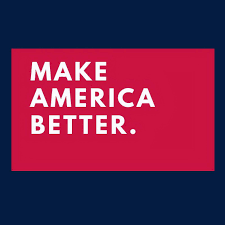ABSTRACT: Twenty years of experience with previous “trade” treaties and the recent leaks of draft language for the Trans-Pacific Partnership (TPP) make the case that the “trade” treaties currently in negotiation will not benefit the US economy, our workers, or our middle class. These treaties focus on and benefit multi-national corporations and investors, rather than trade and the public interest. (See my previous posts of 1/13, 1/8, 9/13/13, and 9/10/13 for more detail.)
The growing resistance to Fast Track authority and these new “trade” agreements in Congress and the public is fueled by growing data on the damaging impacts of the 20 year history of the North American Free Trade Agreement (NAFTA). The same claims are being made for the current trade treaties as were made for NAFTA: that they will promote economic growth, increase jobs, and reduce trade deficits or increase trade surpluses. However, the Mexican trade surplus ($2 billion in 1993) quickly turned into growing deficits, totaling $1 trillion over the 20 year life of NAFTA. With Canada, the other country in NAFTA, the story is similar.
It is estimated that NAFTA has eliminated almost 700,000 jobs in the US. NAFTA established the principle that US corporations could move production out of the US but import the goods produced back into the US without any tariffs or other disincentives. This undermines the wages and benefits of American workers and the middle class. In all three NAFTA countries, wages and benefits for workers have not kept up with increased worker productivity over the last 20 years.
Since NAFTA, the US has entered into trade agreements with Korea, China, and others. While the promise has always been growth in US jobs, our economy, and our trade balance, the result has typically been the opposite. The trade agreements of the past 20 years have cost our economy more than $1 trillion through increased trade deficits and close to a million jobs.
I urge you to contact your elected officials in Washington and tell them you have serious concerns about the “trade” agreements being negotiated. And that these “trade” agreements are too important and too far reaching to be approved quickly and quietly.
FULL POST: Twenty years of experience with previous “trade” treaties and the recent leaks of draft language for the Trans-Pacific Partnership (TPP) make the case that the “trade” treaties currently in negotiation will not benefit the US economy, our workers, or our middle class. These treaties focus on and benefit multi-national corporations and investors, rather than trade and the public interest. (See my previous posts of 1/13, 1/8, 9/13/13, and 9/10/13 for more detail.)
The latest leak has been of the environmental provisions of the TPP. They lack mandated standards and have weak enforcement provisions. They are even weaker than the provisions in previous trade agreements, such as the North American Free Trade Agreement (NAFTA). [1]
Those arguing for Fast Track consideration of the TPP and other treaties by Congress (i.e., short timeframe, no amendments, and no filibuster) argue that treaties should be negotiated by the President and the Executive Branch (and not fiddled with by Congress) and that treaties are generally negotiated behind closed doors. [2] However, the current trade negotiations have included extensive involvement and input from corporate interests but virtually no input from the public; from advocates for workers, the environment, or ordinary citizens; or from Congress and other elected officials (other than the President). Furthermore, the Fast Track process is not necessary to pass trade agreements. President Clinton implemented more than 130 trade agreements without the Fast Track process. [3]
The growing resistance to Fast Track authority and these new “trade” agreements in Congress and among the public is fueled by growing data on the damaging impacts of the 20 year history of the North American Free Trade Agreement (NAFTA). The same claims are being made for the current trade treaties as were made for NAFTA: that they will promote economic growth, increase jobs, and reduce trade deficits or increase trade surpluses. And TPP has specifically been described as NAFTA on steroids.
When NAFTA was being promoted for approval by Congress in 1993, it was stated that it would expand our trade surplus with Mexico, thereby creating 200,000 US jobs in two years and a million in 5 years. However, the Mexican trade surplus ($2 billion in 1993) quickly turned into growing deficits (of $16 billion in 1995, $65 billion in 2008, and $50 billion in 2013). Our trade deficit with Mexico has totaled $1 trillion over the 20 year life of NAFTA.
With Canada, the other country in NAFTA, the story is similar: our trade deficit of $11 billion in 1993 grew to $78 billion in 2008 and $28 billion in 2013. (The dramatic drop in the deficit after 2008 is due to reduced imports because of our Great Recession.) [4]
It is estimated that NAFTA has eliminated almost 700,000 jobs in the US, with 60% of them being in manufacturing. Most of the workers who lost jobs have experienced a permanent loss of income; if they have found other jobs, they pay significantly less. [5] Many workers have experienced long-term unemployment (more than 6 months), which is at historically high levels. Numerous other workers have simply dropped out of the labor force. All of this has led to increases in the costs of government assistance programs, including unemployment benefits and food assistance. [6]
NAFTA established the principle that US corporations could move production out of the US but import the goods produced back into the US without any tariffs or other disincentives. This undermines the wages and benefits of American workers and the middle class. It increases job insecurity and weakens labor unions’ ability to negotiate because of the threat that jobs will be moved out of the US. The result has been stagnant wages for all but the richest Americans and, therefore, growing income inequality. In all three NAFTA countries, the US, Canada, and Mexico, wages and benefits for workers have not kept up with increased worker productivity over the last 20 years. [7]
Even Mexican workers have not experienced any significant increase in wages. An important reason for this is that the export of cheap, subsidized corn from the US to Mexico undermined the livelihoods of an estimated 2.4 million Mexican farmers. This displaced Mexican farmers and led to increased immigration (legal and illegal) to the US. Due to the abundant supply of desperate workers, it also pushed down wages in the maquiladora factory zone (the area just south of the US border). [8]
Although Mexico has experienced increased trade and some job growth under NAFTA, the jobs, even those in manufacturing, have been at low wages. The average Mexican manufacturing wage is only 18% of the US wage and that percentage has grown only slightly. The poverty rate in Mexico is 51%, down only slightly from the 52% when NAFTA went into effect. There has been an increase in the availability of consumer goods, but environmental protections have had mixed results at best. Disposal of US waste in Mexico has increased, including, for example, a 500% increase in US exports of highly toxic, spent lead-acid car batteries, with minimal control to ensure environmentally safe handling of them. [9]
Under NAFTA, US corporations have attempted to weaken Canadian regulations on a range of issues, including offshore oil drilling, fracking, pesticides, and drug patents. [10] Mexico and Canada have paid $350 million to foreign corporations for claims that their laws, rules, regulations, or other actions reduce current and expected profits.
Since NAFTA, the US has entered into trade agreements with Korea, China, and others. While the promise has always been growth in US jobs, our economy, and our trade balance, the result has typically been the opposite. Since the 2012 agreement with Korea, the US trade deficit with Korea has increased by $8.5 billion and an estimated 40,000 jobs have been lost. Our trade deficit with China has soared to $294 billion in 2013 from $83 billion in 2001 when China was permitted to join the World Trade Organization. [11]
The trade agreements of the past 20 years have cost our economy more than $1 trillion through increased trade deficits and close to a million jobs. They are key reasons that unemployment is high and the economic recovery is so weak. Furthermore, the mitigation provisions for these past trade agreements, such as retraining for workers who lost their jobs, have been woefully inadequate and ineffective.
I urge you to contact your elected officials in Washington and tell them you have serious concerns about the “trade” agreements being negotiated. And that these “trade” agreements are too important and too far reaching to be approved quickly and quietly. Full disclosure and debate of their provisions is what democracy requires.
[2] Boston Globe Editorial, 1/19/14, “Pacific, EU trade deals need up-or-down votes,” The Boston Globe
[3] Johnson, D., 1/10/14, “New Fast-Track bill means higher trade deficits and lost jobs,” Campaign for America’s Future
[6] Folbre, N., 8/5/13, “The free-trade blues,” The New York Times
[7] Faux, J., 1/1/14, “NAFTA, twenty years after: A disaster,” Huffington Post
[8] Wallach, L., 12/30/13, “NAFTA at 20: ‘Record of damage’ to widen with ‘NAFTA-on-steroids’ TPP,” Global Trade Watch, Public citizen
[9] Stevenson, M., 1/3/14, “20 years after NAFTA, a changed Mexico,” The Boston Globe from the Associated Press
[10] Carter, Z., 12/8/13, , “Obama faces backlash over new corporate powers in secret trade deal,” The Huffington Post
[11] Johnson, D., 12/18/13, see above

